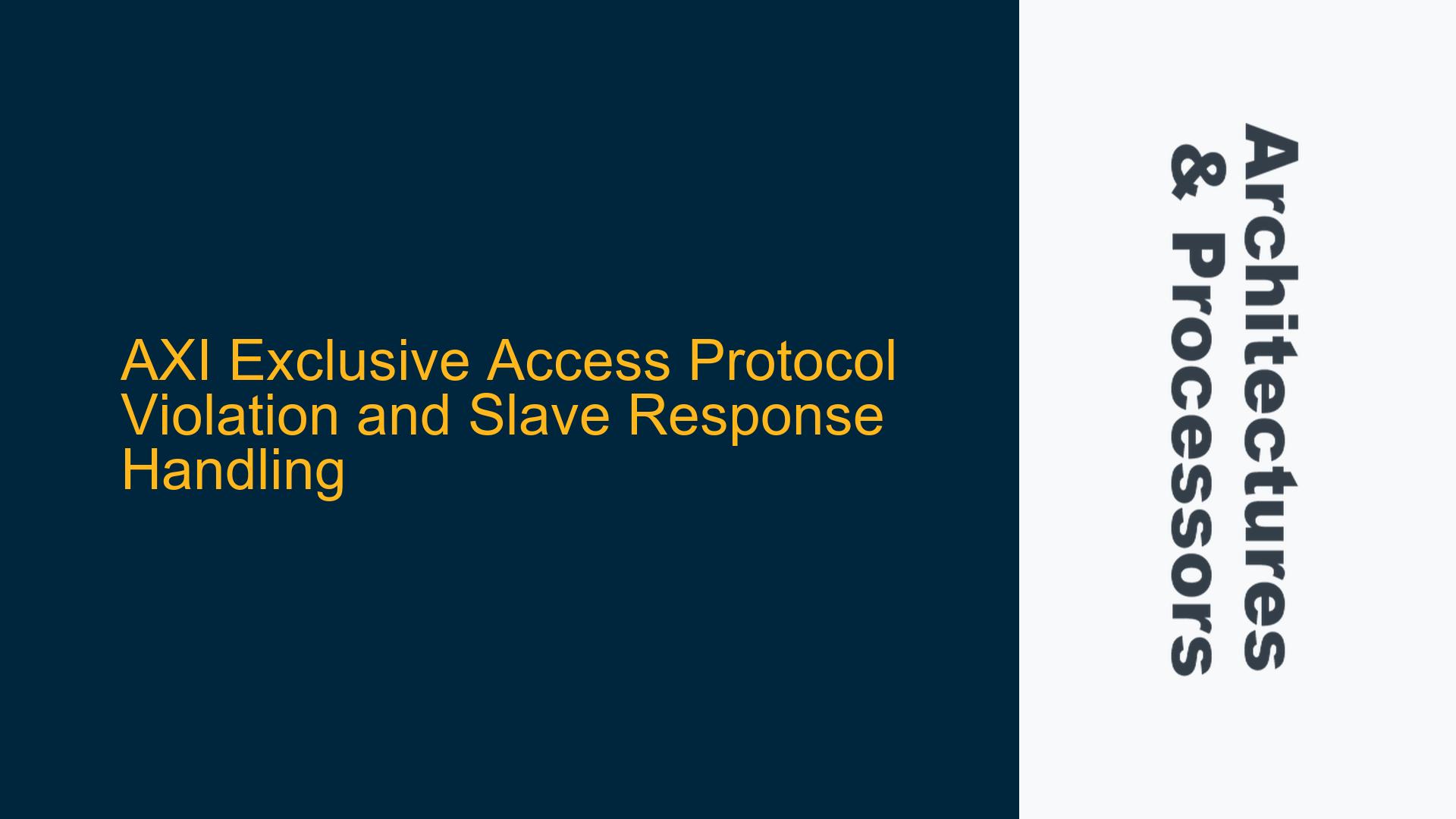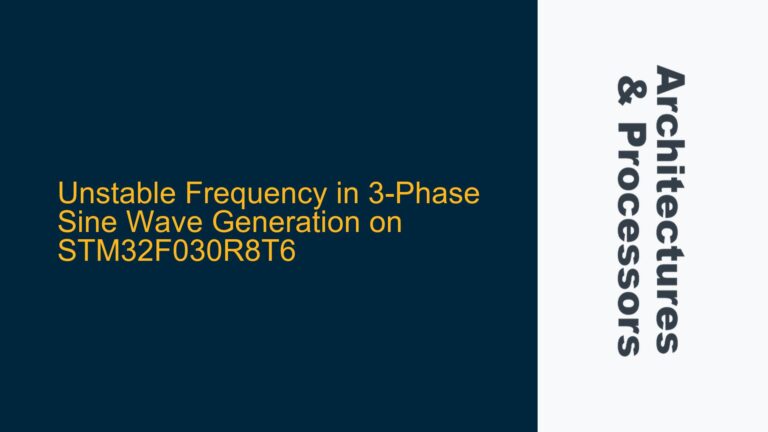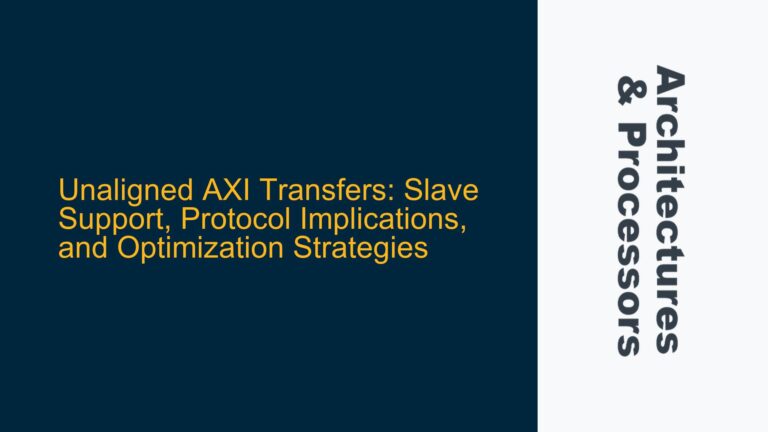AXI Exclusive Write Without Preceding Exclusive Read: Protocol Violation and Implications
The AXI protocol mandates that an exclusive write transaction must always be preceded by a matching exclusive read transaction. This sequence ensures that the master has a monitored copy of the target location before attempting to modify it. The exclusive access mechanism is designed to support atomic operations, where the master can verify that the target location has not been modified by another agent before performing the write. If a master issues an exclusive write without a preceding exclusive read, it violates the AXI protocol. This violation leads to undefined behavior and potential system-level issues, particularly when dealing with slaves that do not support exclusive access.
When a slave does not support exclusive access, it treats all transactions as normal, regardless of the exclusive access flags. For an exclusive write transaction, such a slave will update the target location and return an OKAY response. The OKAY response, in this context, indicates that the transaction was completed successfully but does not provide any information about the exclusivity of the access. The master, upon receiving the OKAY response, must interpret it as an exclusive access failure. However, the master cannot distinguish between an OKAY response from a slave that supports exclusive access and one that does not. This ambiguity can lead to incorrect assumptions about the state of the target location.
The protocol violation becomes particularly problematic when the master assumes that the target location was not updated, despite the slave having done so. This assumption can lead to data corruption or incorrect program behavior, as the master may not retry the exclusive access or take corrective action. The AXI specification explicitly prohibits exclusive writes without preceding exclusive reads to avoid such scenarios. However, understanding the implications of this violation is crucial for debugging and ensuring robust system design.
Slave Response Handling for Exclusive Transactions: OKAY vs. EXOKAY
The AXI protocol defines two primary response types for exclusive transactions: OKAY and EXOKAY. The OKAY response indicates that the transaction was completed successfully but does not confirm the exclusivity of the access. The EXOKAY response, on the other hand, confirms that the exclusive access was successful and that the target location was not modified by another agent between the exclusive read and write transactions. For slaves that do not support exclusive access, the only possible response to an exclusive transaction is OKAY.
When a master receives an OKAY response to an exclusive write transaction, it must interpret this as an exclusive access failure. However, the master cannot determine whether the failure was due to the target location being modified by another agent or because the slave does not support exclusive access. This ambiguity can lead to incorrect behavior if the master assumes that the target location was not updated. In the case of a slave that does not support exclusive access, the target location will always be updated, and the master must account for this in its error handling logic.
The AXI protocol does not provide a mechanism for the master to distinguish between these two scenarios. This limitation underscores the importance of adhering to the protocol’s requirement that exclusive writes must be preceded by exclusive reads. By following this sequence, the master can ensure that it only attempts exclusive writes on slaves that support exclusive access, thereby avoiding the ambiguity associated with the OKAY response.
Corrective Measures and Design Considerations for AXI Exclusive Access
To address the issues arising from AXI exclusive access protocol violations and ambiguous slave responses, several corrective measures and design considerations must be implemented. These measures ensure that the system behaves correctly and robustly, even in the presence of protocol violations or unsupported features.
First, the master must be designed to strictly adhere to the AXI protocol’s requirement that exclusive writes must be preceded by exclusive reads. This adherence ensures that the master only attempts exclusive writes on slaves that support exclusive access, thereby avoiding the ambiguity associated with the OKAY response. The master should also include logic to detect and handle protocol violations, such as attempting an exclusive write without a preceding exclusive read. This logic can include assertions or error flags that alert the system to the violation and prevent further incorrect behavior.
Second, the slave design must include logic to handle exclusive transactions correctly, even if it does not support exclusive access. For slaves that do not support exclusive access, this logic should ensure that the target location is updated and an OKAY response is returned for all transactions, regardless of the exclusive access flags. This behavior ensures that the system remains consistent, even if the master violates the protocol. Additionally, the slave should include logic to detect and handle unsupported exclusive transactions, such as logging an error or asserting a flag to alert the system.
Third, the system-level design must include mechanisms to handle the ambiguity associated with the OKAY response. This handling can include additional error checking and correction logic in the master, such as verifying the state of the target location after an exclusive write or implementing retry mechanisms for failed exclusive accesses. The system should also include monitoring and debugging tools to detect and diagnose protocol violations and ambiguous responses, ensuring that any issues can be identified and corrected quickly.
Finally, the design and verification process must include comprehensive testing of the exclusive access mechanism, including corner cases and protocol violations. This testing should include simulations of scenarios where the master violates the protocol or the slave does not support exclusive access, ensuring that the system behaves correctly and robustly in all cases. The verification environment should include assertions and coverage metrics to ensure that all aspects of the exclusive access mechanism are tested and verified.
By implementing these corrective measures and design considerations, the system can ensure robust and correct behavior for AXI exclusive access transactions, even in the presence of protocol violations or unsupported features. This robustness is crucial for ensuring the reliability and correctness of the system, particularly in complex SoC designs with multiple masters and slaves.
Conclusion
The AXI exclusive access mechanism is a powerful tool for supporting atomic operations in complex SoC designs. However, its correct implementation requires strict adherence to the protocol’s requirements and careful handling of slave responses. Protocol violations, such as attempting an exclusive write without a preceding exclusive read, can lead to undefined behavior and system-level issues, particularly when dealing with slaves that do not support exclusive access. By understanding the implications of these violations and implementing corrective measures and design considerations, designers can ensure robust and correct behavior for AXI exclusive access transactions, even in the presence of protocol violations or unsupported features. This understanding and implementation are crucial for ensuring the reliability and correctness of complex SoC designs.






